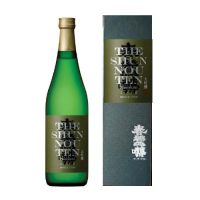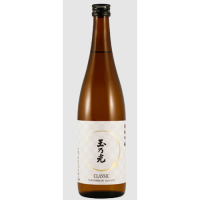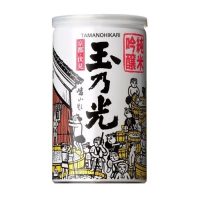-
Shirakabegura means "White-Walled Brewery." The packaging mirrors the meaning. This smooth, complex, nuanced full body sake is delicious and approachable. The Tokubetsu Junmai type sake displays a wide range of flavors depending on whether you serve it warmed or at room temperature. Either option will give you an enjoyably complex yet smooth, umami focused blend that will linger on your taste buds.
-
This is the flagship product which is made by carefully refining of the rice “Yamada Nishiki” polished up to 40%, and brewed with the skill and heart of the chief brewers. It is a Sake that drinks smoothly with a deeply elegant and rich flavorful taste that is called upon for an enjoyable, relaxing time.
-
Dry, but with a round edge to it. This sake is the most fresh, fruity, and vibrant tasting of the Shunnouten lineup. Takazasu refers to the mountain that is seen from the winery- the southernmost edge of the "Japanese Alps."
-
Enjoy the balance and earthy richness and aroma of this sake. A soft mouthfeel invites you to drink more, and enjoy its easy-going nature. The most important flavor note would be: freshly steamed rice. That is the ultimate goal, always.
-
Uses 100% contract supplier Yamada Nishiki rice. Brewed only locally produced Yamada Nishiki rice, which is carefully refined at in-house mill to a 50% polish rate. It is a beautiful sake with a faint ginjo (fruity) scent, and a sharp, refreshing taste exhibiting the savoriness of rice. Drink cold, or at room temperature.
-
A light and crisp taste with strong, savory rice notes which blossom on the mouth. Finishes clean and dry. Karakuchi means "Dry," a favorite style among sake drinkers.
-
An incredibly light, reserved aroma of the breeze on a rocky beach, gentle rice notes, perfect acidity and a fine, fresh, mineral finish. The kind of sake that chefs dream about. Unobtrusive, but deep.
-
This 'classic' sake has a rich and pillowy texture, pleasant acidity and great depth of flavor. The Yamahai brewing method is utilized, which doubles the skill and time required to brew - the Yamahai method employs strict temperature and cleanliness controls to foster the growth of a rich, healthy and natural brew high in peptides and umami components as well as natural lactic acid. This sake is best enjoyed warmed in the winter, but chilling draws out a tight vibrancy that is positively delicious.
-
Tamanohikari uses Bizen-Omachi rice, a rare variety regarded as the best rice for making sake. The nose is very floral with notes of pear, spicy nutmeg, and a hint of anise. Cottony flavors of nuts, banana, and pear dance on the tongue and fall to a pleasant, pillowy dryness.
-
This Junmai Ginjo grade canned sake has a natural acidity balanced with soft and savory Umami characteristics. Has light flower and grain notes on the nose, and a refreshing medium-short finish. Popular for Izakaya and Ramen shops.

















